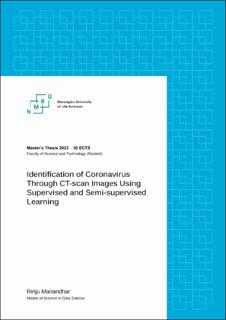| dc.description.abstract | * This study if based on the exploration of four different supervised deep learning models namely DenseNet201, ResNet50, CNN_model_1 (five blocks) and CNN_model_2 (seven blocks) for the identification of COVID-19 through CT-scan images both with and without image augmentation. These supervised models were trained on the original dataset having 1252 COVID and 1229 non-COVID CT-scans taken from Kaggle.
* We also extended the study to explore the impact of semi-supervised learning (EfficientNetB4 with noisy-student weight) on the diagnosis of coronavirus through CT-scans with and without augmentation. For this scenario, we took 600 samples from original dataset with only 60 number of limited labeled data. We analyzed the performance of semi-supervised model on this scenario along with supervised model (DenseNet201) to evaluate the effect of semi-supervised approach for the detection of COVID with CT-scan images.
* The result analysis showed that among the employed supervised models, DenseNet201 provided highest accuracy and lowest mis-prediction for COVID detection through CT-scans when all labeled data is available. However, when limited labeled data is provided, semi-supervised learning performed significantly better than supervised model. | |
